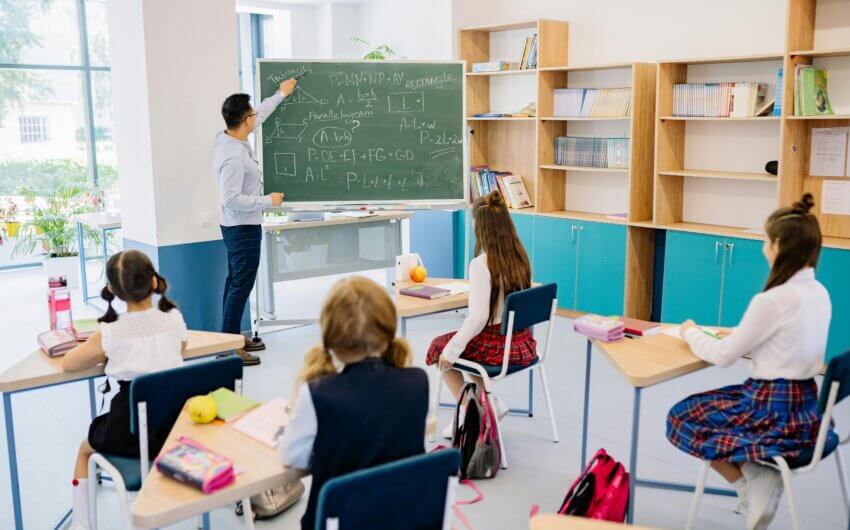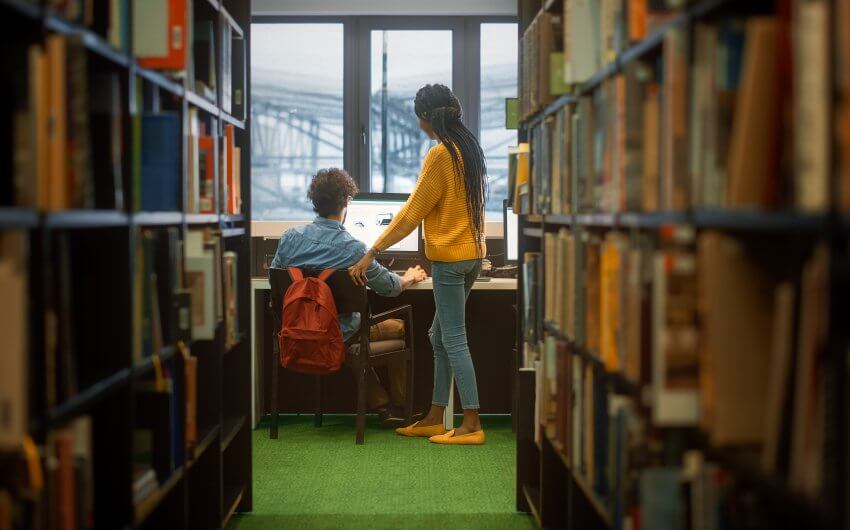Modern learners crave a more customized learning experience — this is where flipping the classroom comes into play
Imagine a classroom where you don’t have to spend hours at a time lecturing. Instead, you can facilitate your students’ projects, allow them to ask questions, and give them the resources they need to help each other. Welcome to the flipped classroom!
Teachers across the country profess the benefits of a flipped classroom or a flipped lesson. In this article, we explain what exactly a flipped lesson is, why it benefits teachers and students, how to start incorporating a few flipped lessons into your curriculum, and how to create a flipped classroom.
What does it mean to flip the classroom?
Flipping the classroom is a type of blended learning approach in which students independently study new concepts via technology and apply that knowledge through in-class assignments facilitated by the teacher.
Creating a flipped classroom, or even just a flipped lesson, rethinks when students need access to help and assistance. Traditionally, teachers introduced new concepts to their students in the classroom through lectures or presentations. Then, students completed assignments at home to help them apply the concepts learned in class. The problem is that students usually need more access to resources and assistance when they’re doing the work, rather than when they are introduced to the new topic.
The flipped classroom, or flipped lesson, approach ensures that students get the help they need when completing assignments that challenge their ability to apply the concepts they’ve learned through independent study.
What is a blended learning classroom?
The blended learning approach is exactly what it sounds like: using a blend of technology, classroom learning, and self-study to provide students with an integrated educational experience. There are three parts to the blended learning approach:
- Students use technology to learn on their own time, wherever they are.
- There is also a more traditional, brick-and-mortar classroom where students learn from educators.
- All learning experiences integrate with each other to provide a well-rounded, blended approach.
The key here is that technology and classroom teaching are both used in a thoughtful, well-constructed way. The flipped classroom model is a type of blended learning approach, and there are plenty of other blended learning models for teachers to experiment with.
What are the advantages of a flipped classroom?
Flipping the classroom has shown to increase students’ comprehension of a subject as well as improve test scores. Other benefits of a flipped class or flipped lesson include:
- Students can learn at their own pace, creating a more customized learning experience.
- Recorded lectures can be used from one year to the next.
- You can track students’ progress much easier in class while you facilitate projects.
Though 96% of teachers surveyed who implemented flipped classroom techniques would recommend it to other teachers, it’s not a perfect model. Some teachers have found that their students lacked the motivation to prepare for class at home, while others reported that their students didn’t have access to the technology they need to complete required work. That’s why it’s important to start small, test, evaluate, and then adjust.
Read more: Don’t have the funding to flip your classroom? Check out our list of STEM and classroom grants available for teachers across the country.
Flipping your classroom step-by-step
If you’re interested in learning how to create a flipped classroom, we’ve compiled a few simple steps you can take to get going. Start with one flipped lesson, then flip a whole subject, and keep building until you’ve flipped the whole class. The key components of a flipped lesson are
- A blend of instruction from the teacher as well as independent study
- The teacher is the facilitator or guide during class time, not the lecturer
- Students take charge of their own learning
- Lessons and resources are always available for students’ review

























